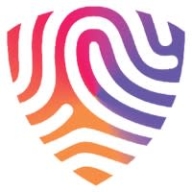

BigID and Orca Security compete in data security and compliance. Orca Security seems to have the upper hand due to its comprehensive features and perceived value.
Features: BigID offers strong data discovery capabilities, detailed data classification, and in-depth privacy compliance tools. Orca Security provides complete visibility, risk assessment for cloud environments, and multi-cloud adaptability.
Room for Improvement: BigID needs better integration with third-party systems, improvements in scalability, and more user-friendly interfaces. Orca Security could improve its alert management system, enhance reporting capabilities, and optimize resource consumption.
Ease of Deployment and Customer Service: BigID offers deployment flexibility but with complexity, requiring intensive setup. Orca Security provides straightforward deployment with an agentless architecture. Orca serves better support responsiveness than BigID.
Pricing and ROI: BigID is more cost-effective initially, but Orca Security reports higher ROI over time. Despite higher upfront costs, Orca offers better long-term value with expansive security coverage.


BigID is a leader in data security, privacy, compliance, and governance: enabling organizations to proactively discover, manage, protect, and get more value from their data in a single platform for data visibility and control. Customers use BigID to reduce their data risk, automate security and privacy controls, achieve compliance, and understand their data across their entire data landscape: including multicloud, hybrid cloud, IaaS, PaaS, SaaS, and on-prem data sources.
At Orca Security, we’re on a mission to make it fast, easy, and cost effective for organizations to address critical cloud security issues so they can operate in the cloud with confidence.
Key Platform Features:
Agentless: Complete, centralized coverage of the entire cloud estate, without the need for installing and configuring agents or layering together multiple siloed tools. Full visibility of cloud misconfigurations, vulnerabilities, workload protection, malware scanning, image scanning, file integrity monitoring and more.
Asset Inventory: Get a complete inventory of all your public cloud assets, including detailed information on installed OSes, software, and applications, as well as data and network assets such as storage buckets, Virtual Private Clouds (VPCs), and Security Groups.
Attack Path Analysis: Visualize attack vectors to critical assets or crown jewels. See which assets are susceptible to lateral movement, assume roles, privilege escalation, and more.
Risk Prioritization: Prioritize the 1% of risks that matter the most, based on impact scores. Secure the vulnerabilities and misconfigured targets (critical assets) and eliminate the potential risks residing on the attack paths to those targets.
Cloud Threat Detection: Monitor for malicious activity within your entire cloud estate. Be aware of detected threats, user behavior anomalies and more.
Breach Forensics: Log every change and all activity into a central repository for investigation procedures to confirm or deny entry and compromises within the cloud estate.
Cloud To Dev (Shift Left): Orca’s built-in shift left capabilities enables DevOps to focus more security attention earlier in the CI/CD pipelines. Security teams are able to trace a production risk (misconfiguration or vulnerability) directly to the original source code repository from which it came, even down to the exact line of code that is at the root of the identified risk.
Compliance: Choose from over 60 preconfigured compliance frameworks, cloud security best practices, CIS Benchmarks, or design and build your own compliance framework for fast and continuous reporting.
Security Score: The Orca Security Score is found on Orca’s Risk Dashboard and is updated daily. The overall score is calculated based on performance in the following five categories - Suspicious Activity, IAM, Data at Risk, Vulnerable Assets, and Responsiveness. Since the scores are percentage based and not raw numbers, you can objectively make comparisons to other organizations within your industry or business units of different sizes. In addition to reporting to senior management, the Orca Security Score can help with internal self-monitoring, as a way of measuring risk mitigation efforts, to know where to focus efforts, and track progress.
Orca Security Benefits
Consolidate technologies to reduce costs and complexity:
“The more I can get out of this one solution, the better. I see Orca as the tool where we get all cloud-related security data.” - Joshua Scott, Head of Security and IT | Postman
Avoid costly breaches:
"I look at proactive asset discovery, configuration management, and vulnerability management as being able to find a vulnerability before the bad guys do and being able to deal with it before something exploits it. This is what Orca does for us." - Doug Graham, CSO & CPO | Lionbridge
Increase team productivity and efficiency by focusing on high-value activities and solving the 1% of risks that matter most:
"Orca is unique in that it locates vulnerabilities with precision and delivers tangible, actionable results – without having to sift through all the noise." - Aaron Brown, Senior Cloud Security Engineer | Sisense
Quick Time-to-Value with Immediate ROI:
"Orca told us we could have some visibility within 5 or 10 minutes, and I thought, ‘There’s no way.’ Well, I was wrong. They really did it." - Thomas Hill, CISO | Live Oak Bank
Reduce MTTR and remove operational friction:
“We can’t ask developers things like ‘Did you think about security? When you start a new VM on AWS, can you please let me know so I’m able to scan it? Can you please deploy an agent on that machine for me?’ We need a better way to work. Orca provides that better way by eliminating organizational friction.” - Erwin Geirnaert, Cloud Security Architect | NG Data
We monitor all Data Security Posture Management (DSPM) reviews to prevent fraudulent reviews and keep review quality high. We do not post reviews by company employees or direct competitors. We validate each review for authenticity via cross-reference with LinkedIn, and personal follow-up with the reviewer when necessary.